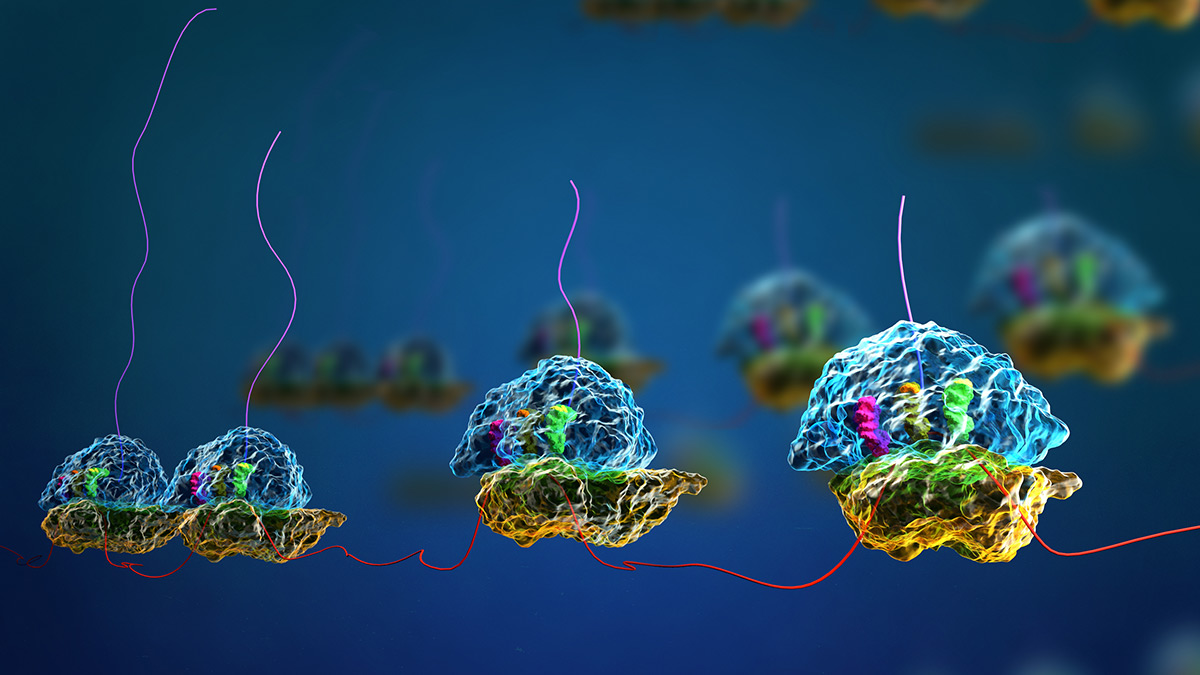mRNA-Translation – a central process for mRNA vaccines and SARS-CoV-2

The protein production process called mRNA translation is essential for all life. SARS-CoV-2 relies on this process in human cells for its replication and manipulates it in its favor. The mRNA vaccination against the coronavirus brings the blueprint for a specific SARS-CoV-2 protein into the cell to gain immunity against SARS-CoV-2.

The process of protein production is essential for all living organisms. If a protein is to be produced, the blueprint is first transcribed from DNA into mRNA. Then the mRNA is “translated” into the corresponding protein, hence the term “translation”. Translation is carried out by a complex and relatively huge machinery in the cells: the ribosome.
The virus “SARS-CoV-2” consists in principle only of the viral genetic material (the genomic RNA), which is well packed in a kind of protective envelope. If the virus enters a cell, the genetic material is released, which contains blueprints for almost 30 viral proteins. However, since the virus does not bring its own tools for protein production, it relies on the human cell’s equipment for replication. Thus, the virus hijacks human ribosomes and reprograms them to its advantage so that they produce almost exclusively the viral components. Researchers at the NCCR RNA & Disease were recently able to reveal how the virus manages to do this in a study.
In another study, the researchers were able to identify a mechanism in the translation of SARS-CoV-2 that is normally not observed in cells: The virus forces the ribosome to make a “misstep,” without which not all viral components can be produced. Knowledge of this “virus-specific” mechanism could soon help develop a drug against SARS-CoV-2.
In order to combat the COVID-19 pandemic, so-called “mRNA vaccines” have been developed and approved for the first time. In principle, these work very similarly to a SARS-CoV-2 infection, but the vaccine brings only one viral blueprint into the cell, that of a component on the surface of the virus (the “spike” protein). This blueprint of the vaccine is translated by the human ribosomes into the “spike” protein, which is recognized by the immune system as foreign and fought against. If infection with the virus follows vaccination, the immune system is armed and can thus immediately recognize and destroy the virus.
At the NCCR RNA & Disease booth, you can learn more about the process of translation. We will show you how mRNA vaccines work and use the latest research findings from our network to explain how SARS-CoV-2 hijacks translation for its replication and how this knowledge can be used to develop new drugs in the future.
